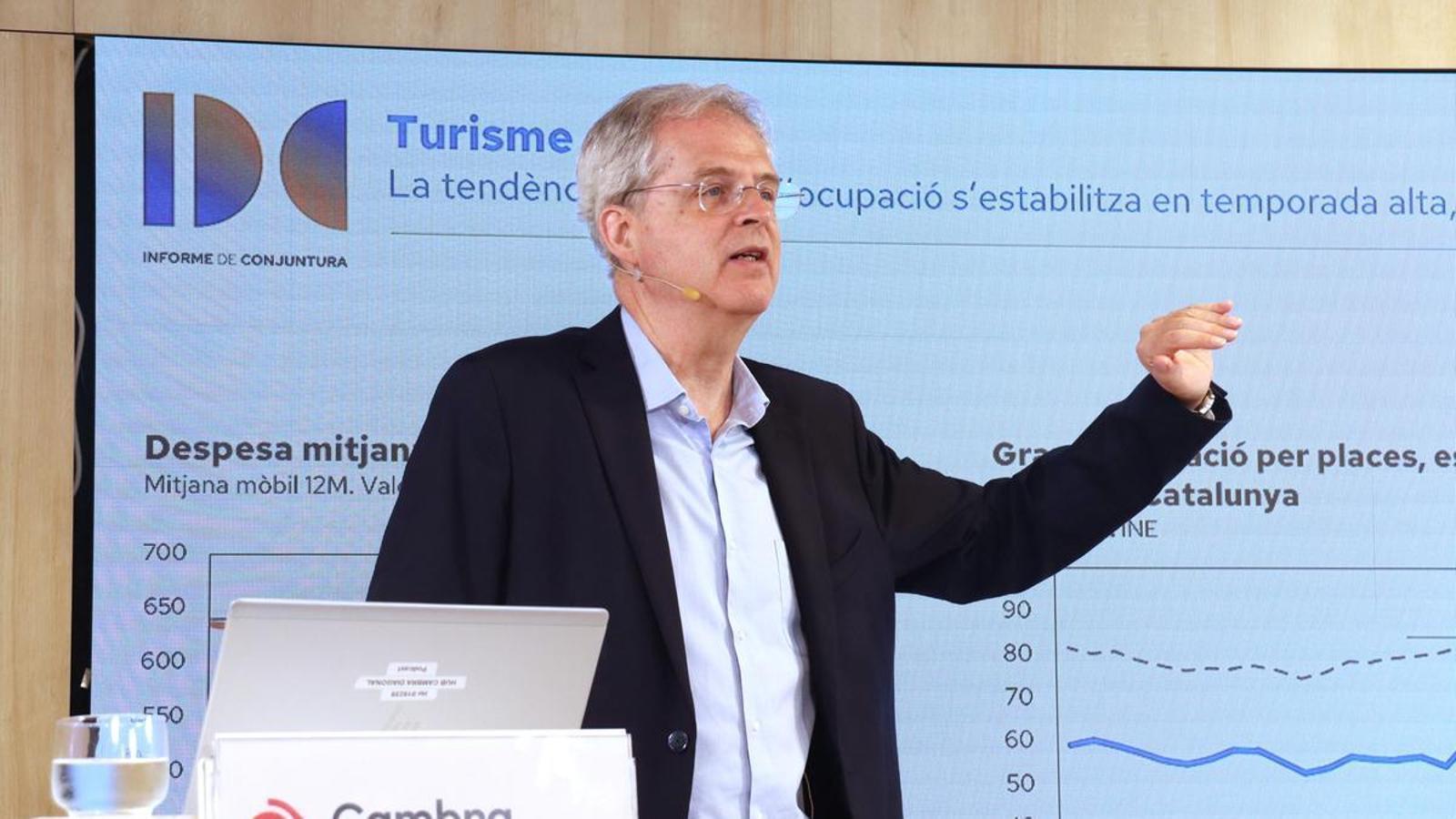Investment is driving the trend and signals a change in the economic model in Catalonia.
The Chamber of Commerce has cut its forecast for Catalan GDP growth for this year by one-tenth to 2.6%.


BarcelonaThe Catalan economy will maintain the expected growth rate over the next two years, provided that the trade war initiated by US President Donald Trump does not escalate further than it has so far, according to forecasts by the Barcelona Chamber of Commerce.
The chamber has presented its quarterly economic report, in which it has cut the expected growth rate of gross domestic product (GDP, the indicator that measures the size of an economy) for this year by one-tenth, to 2.6%, compared to its last prediction2 in the spring of 2.4%.
"We are tripling the European average," recalled the head of the Chamber's research department, Joan Ramon Rovira, at the presentation of the study in Barcelona. economic activity.
However, the Chamber's forecasts do not take into account the potential impact of a US tariff increase on European exports. Negotiations, which are scheduled to begin on August 1, are expected to continue, the economist added.
In fact, exports have been one of the weak points of the Catalan economy in the last year, a fact explained by the context of uncertainty caused by the tariff war, which has cut international trade worldwide. If the US ultimately approved a 30% tariff on European Union products, the direct and indirect negative impact, according to the Bank of Spain, would be more than €22 billion, which in Catalonia would represent approximately €4 billion (at the current level of 10%). is 1 billion). This is a "very significant" impact, but it would not be so much the result of the drop in sales in the US as of a hypothetical drop in exports to European partners, such as Germany or Italy, which are much more dependent on the US market.
Change in the production model
As The same institution already made progress a few months ago, the data analyzed by the Chamber indicate that the Catalan economy is undergoing a shift in its production model. In recent years, the drivers of GDP have been household and public administration consumption, as well as business sectors with lower added value and productivity and low wages. This trend appears to be changing, and investment, especially productive investment (business investment in machinery, research, digitalization, or other productive assets), will be one of the strong points of growth already this year, but even more so next year.
In this regard, Rovira noted that while companies' gross profits have increased significantly since the end of the pandemic, investment has also increased, "but much less," suggesting that the Catalan productive sector still has room to increase investment that would allow for increased productivity. Regarding this increase in productivity, Rovira indicated that it is a "good sign" that GDP per capita is rising.
Apart from this, household savings remain at much higher levels than before the pandemic, which is normally channeled, at least partially, into an overall increase in investment in the economy, although the Chamber predicts that it will normalize downwards.
However, despite the growing weight of investment, the good performance of the labor market—the Chamber predicts a slowdown in the growth of the total number of workers, but by no means a decrease—with a fall in the unemployment rate, will allow private consumption to remain the other pillar of growth for the Catalan economy. In fact, as with investment, Rovira sees room to run, since—discounting the effect of inflation—household consumption still "has not reached 2019 levels."
As for tourism, one of the sectors with the greatest weight in the Catalan economy, Rovira sees little room for growth in volume, since pre-pandemic visitor numbers have been exceeded, unless it is through "deseasonalization" that increases visitor arrivals during the low season months.
